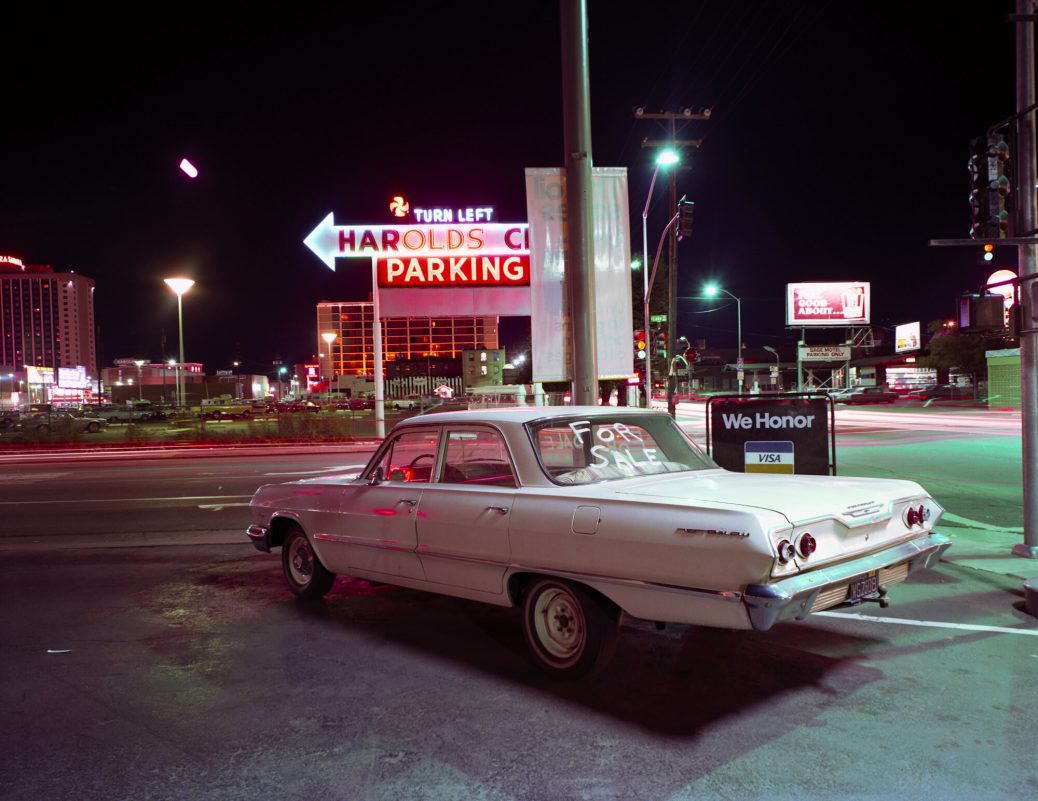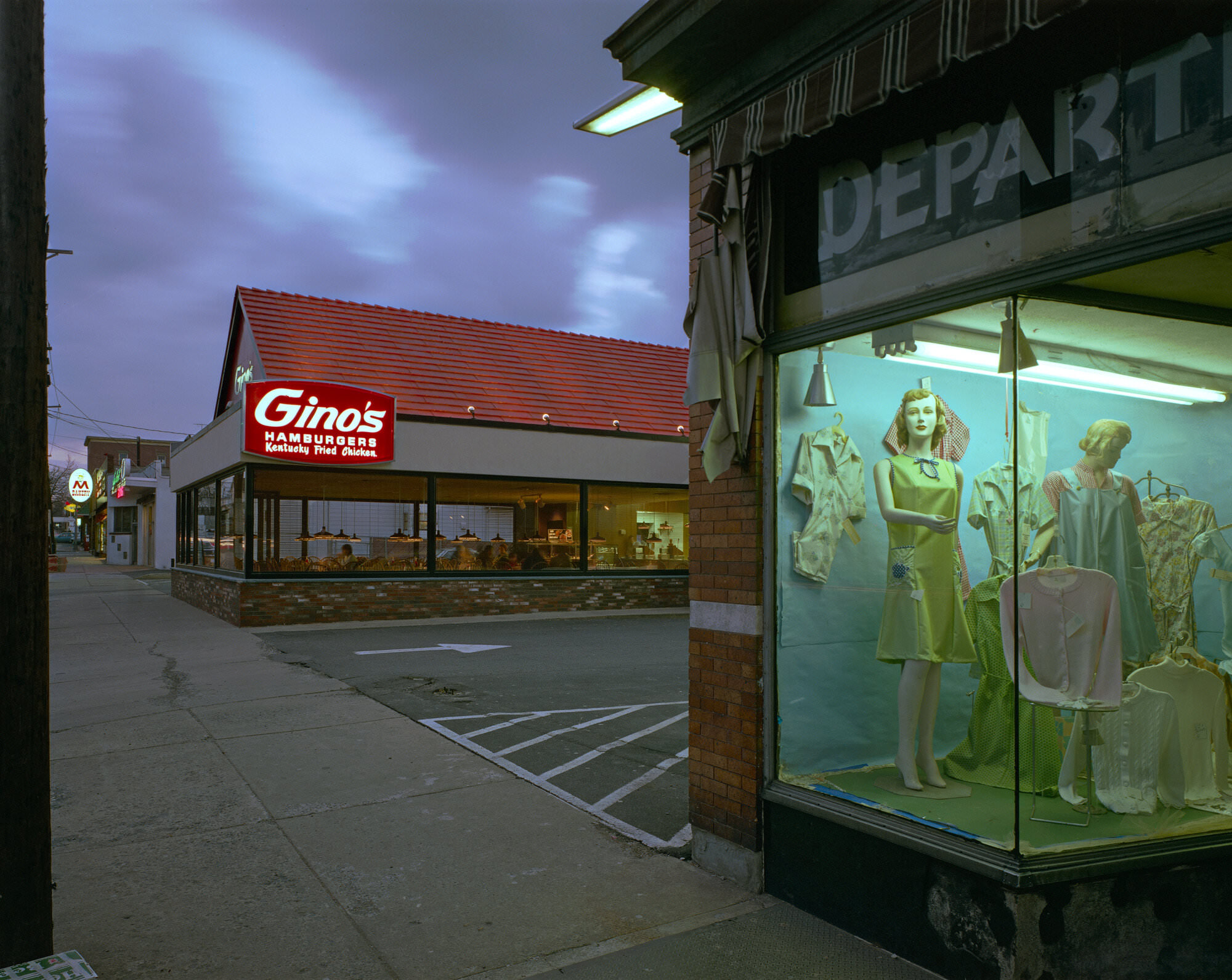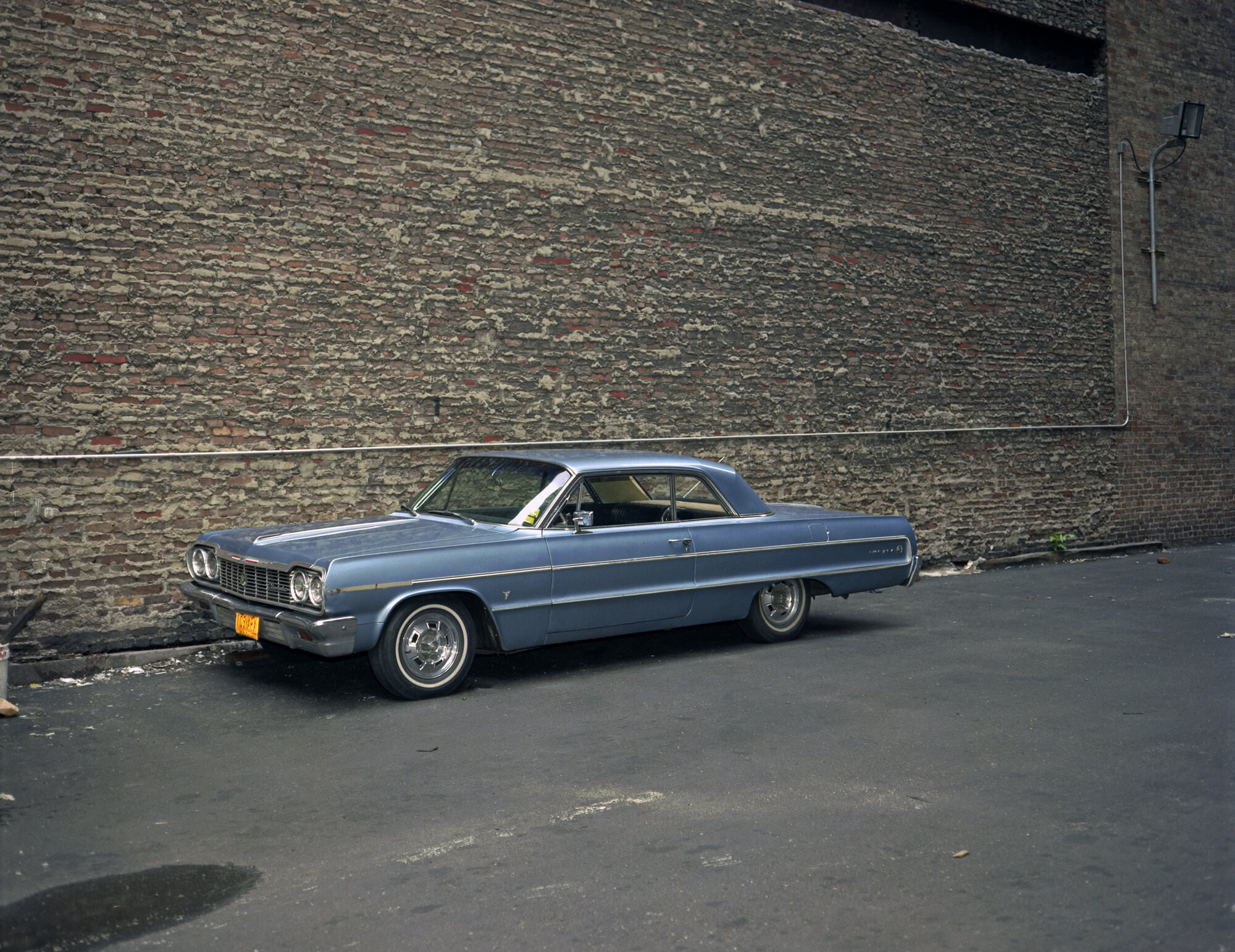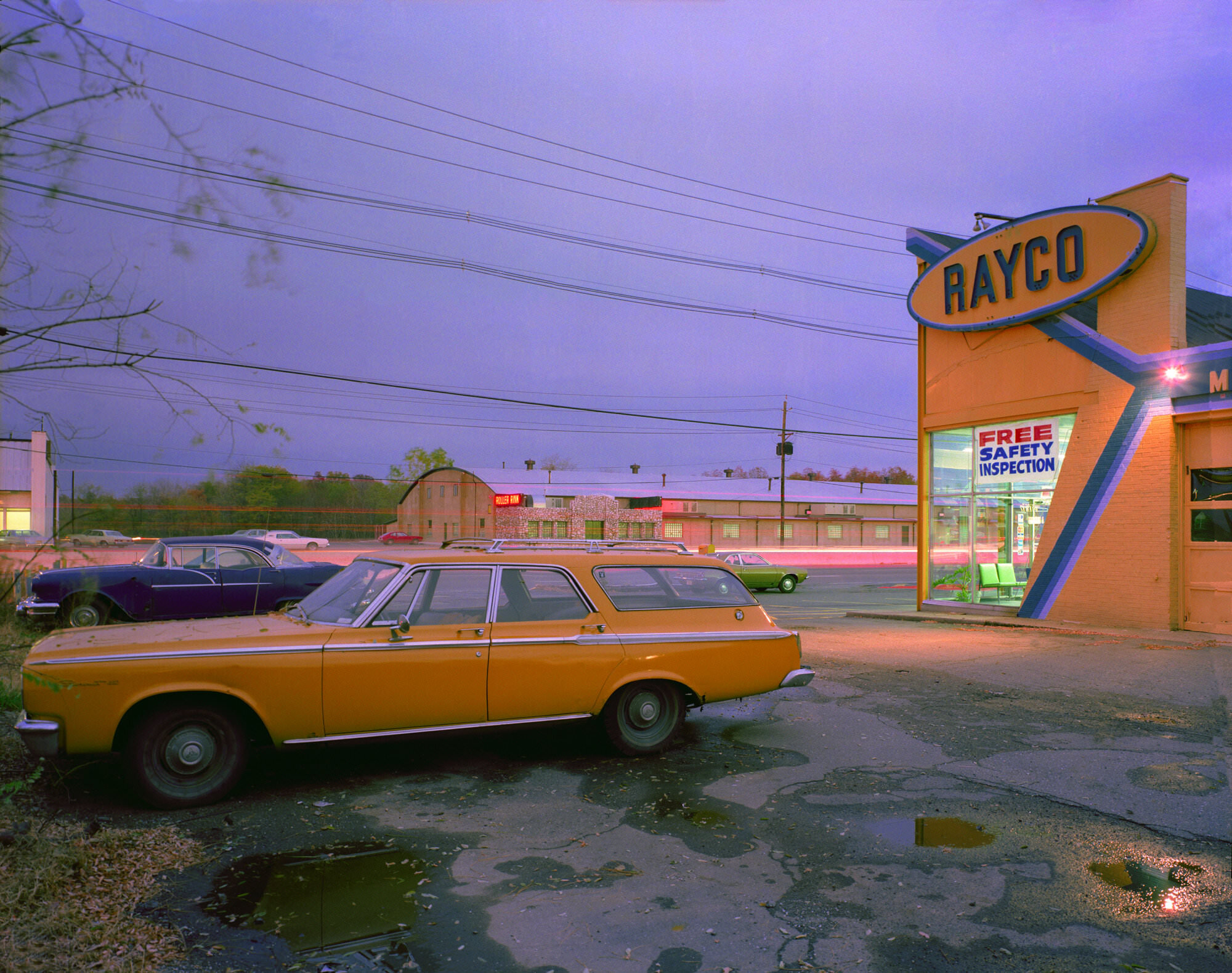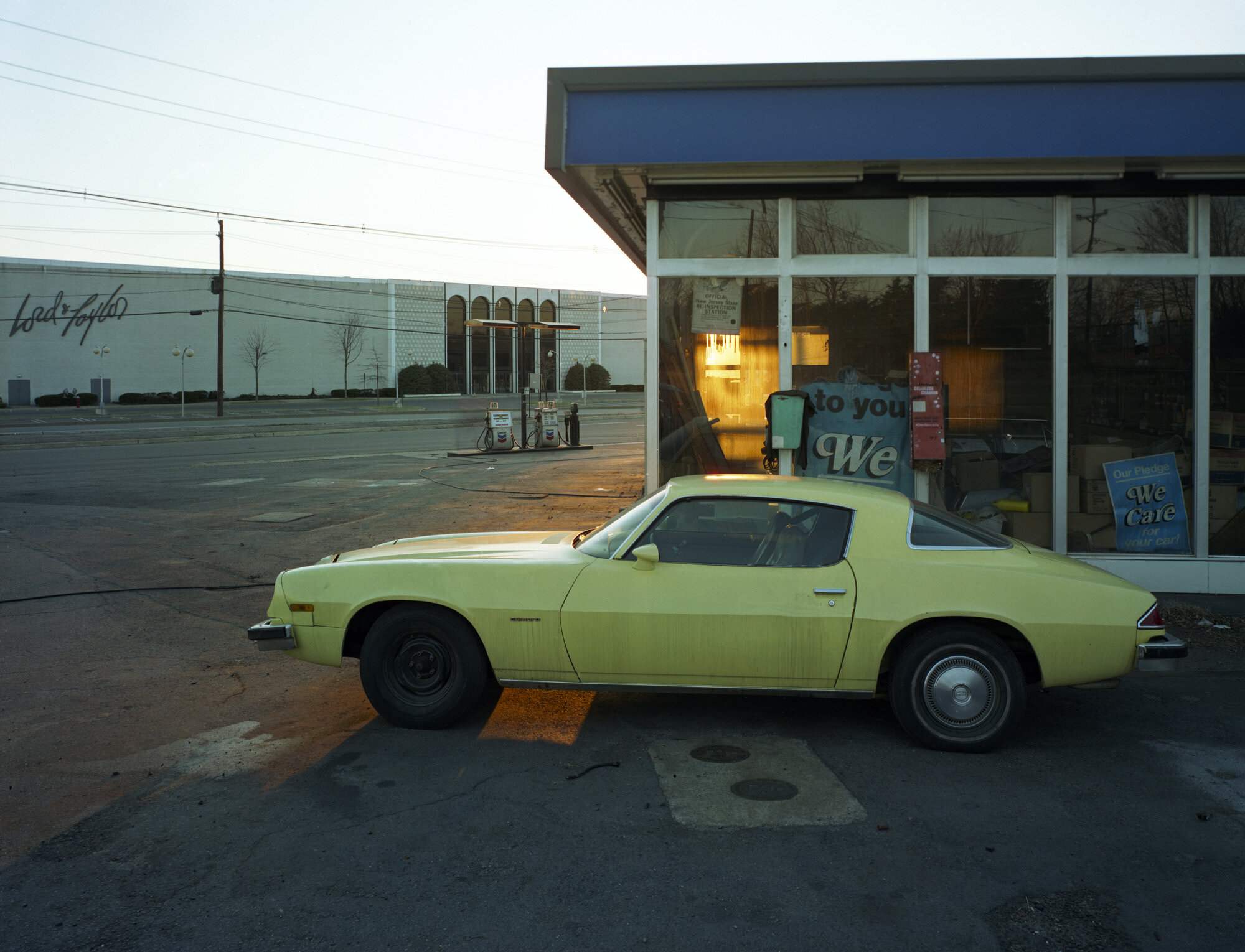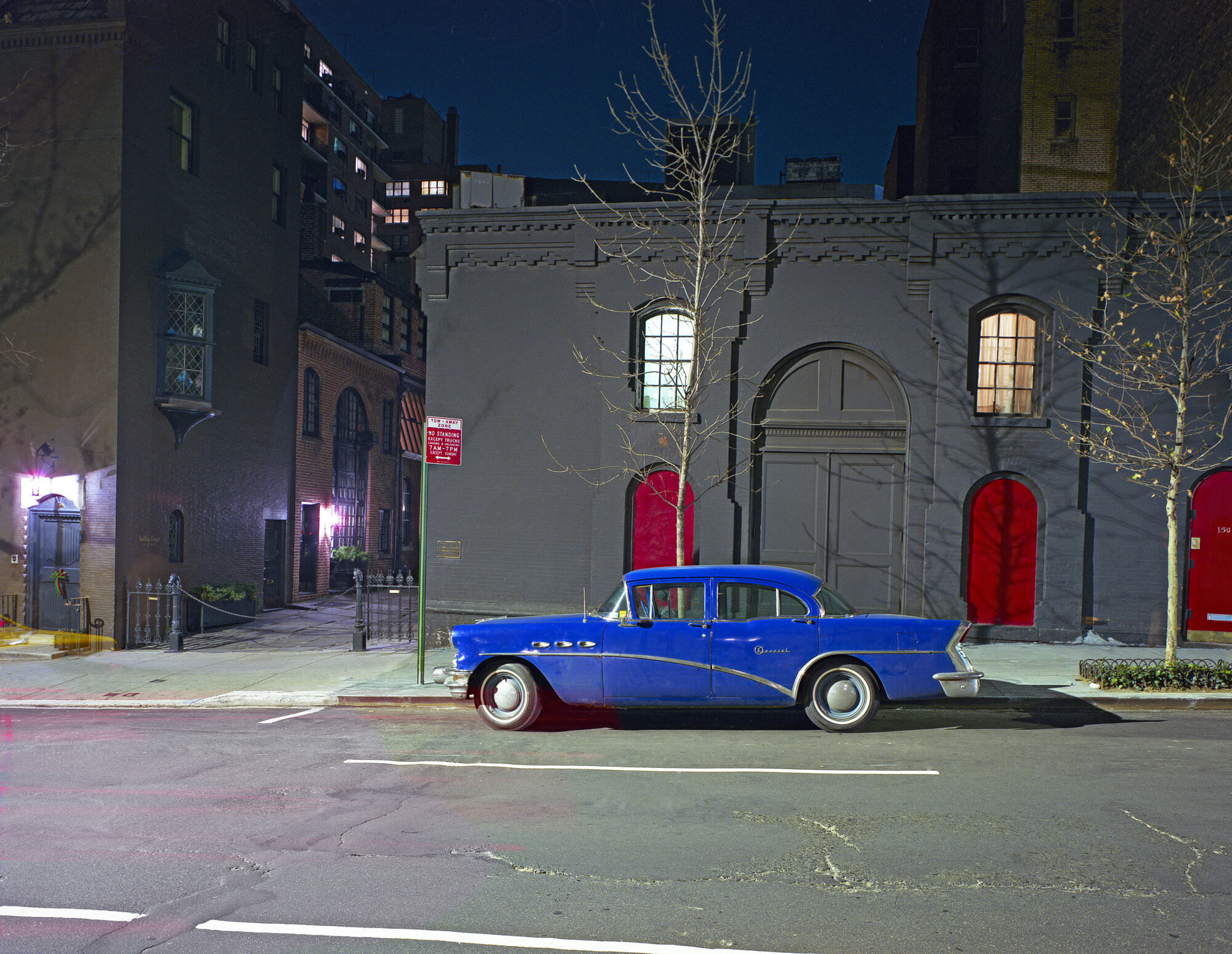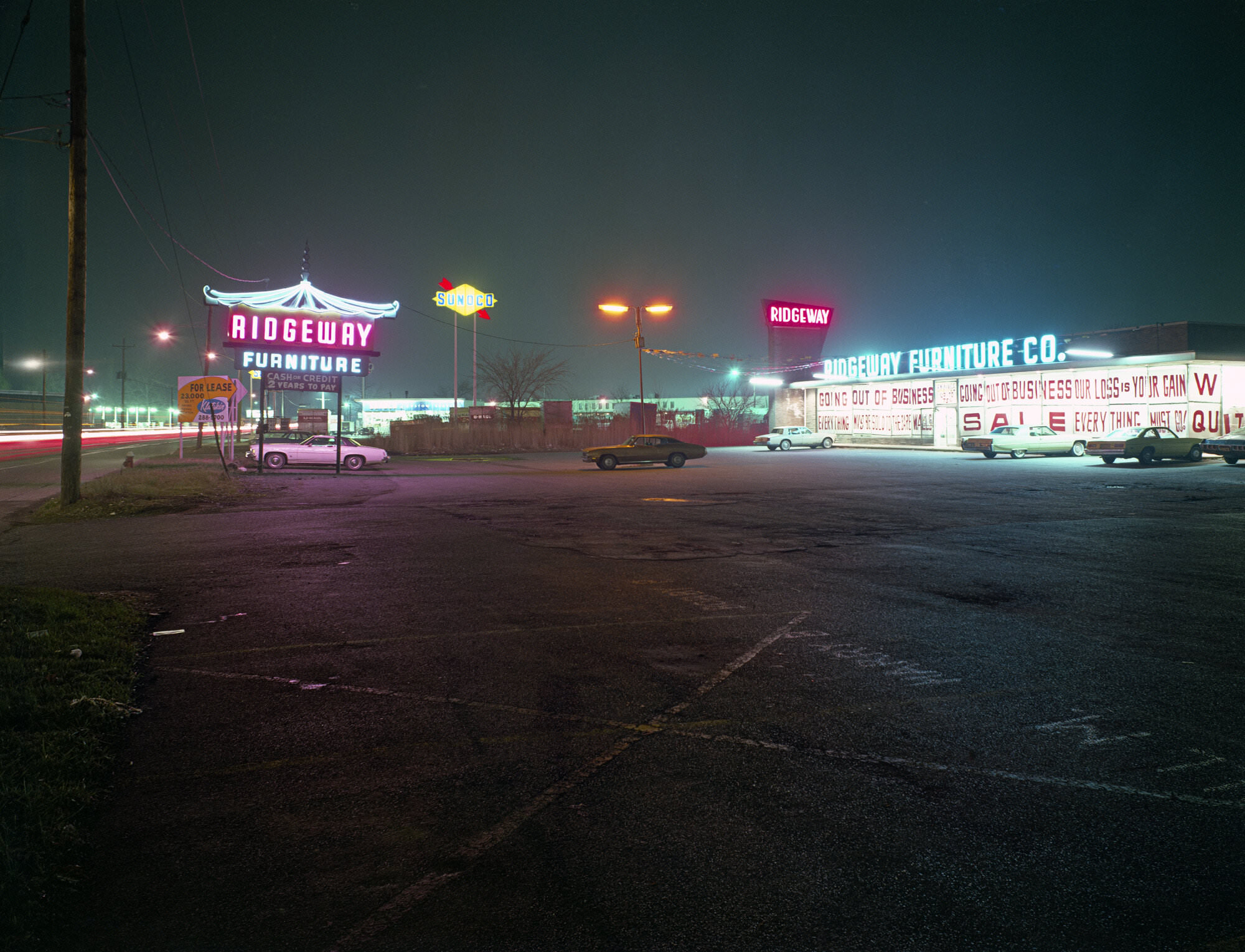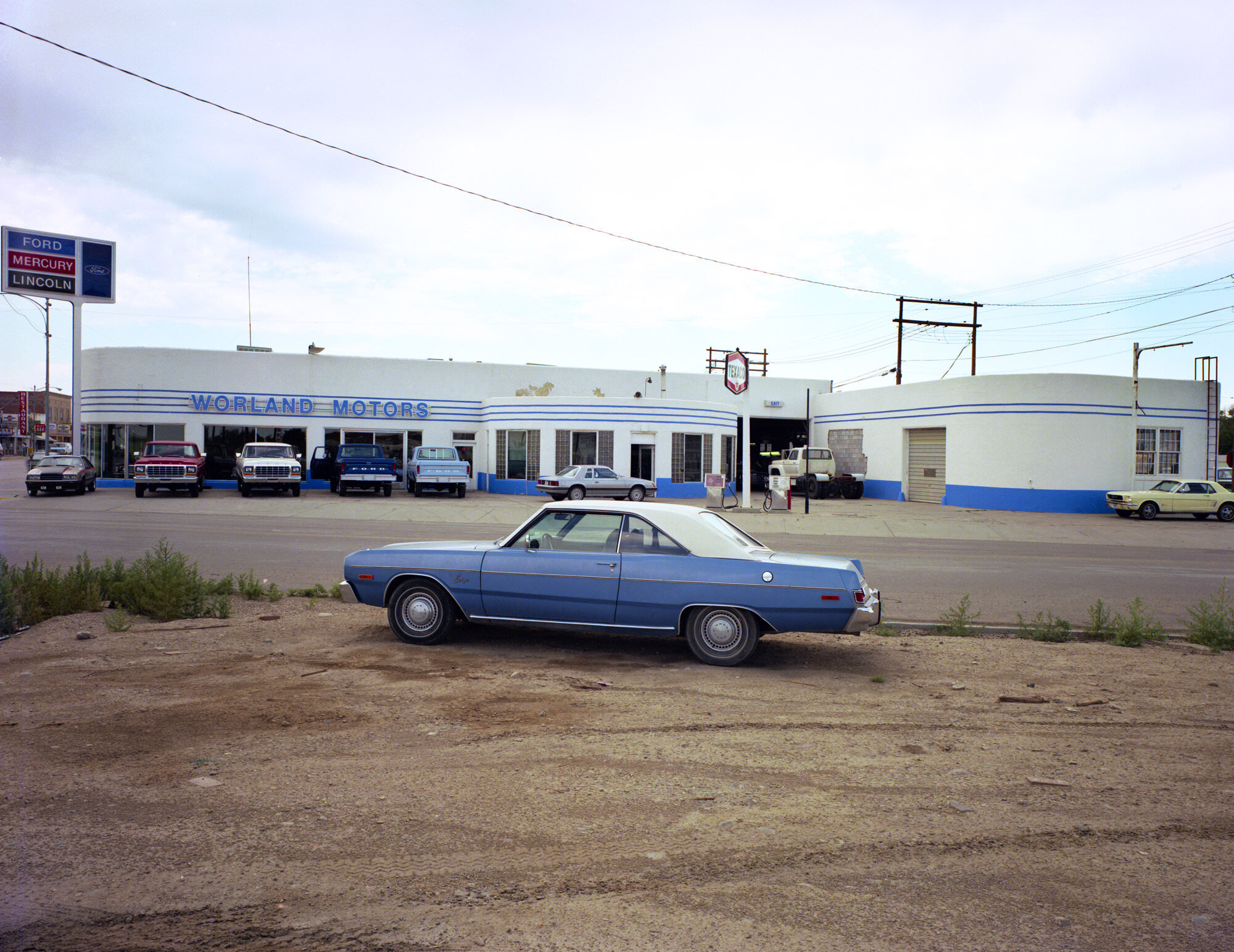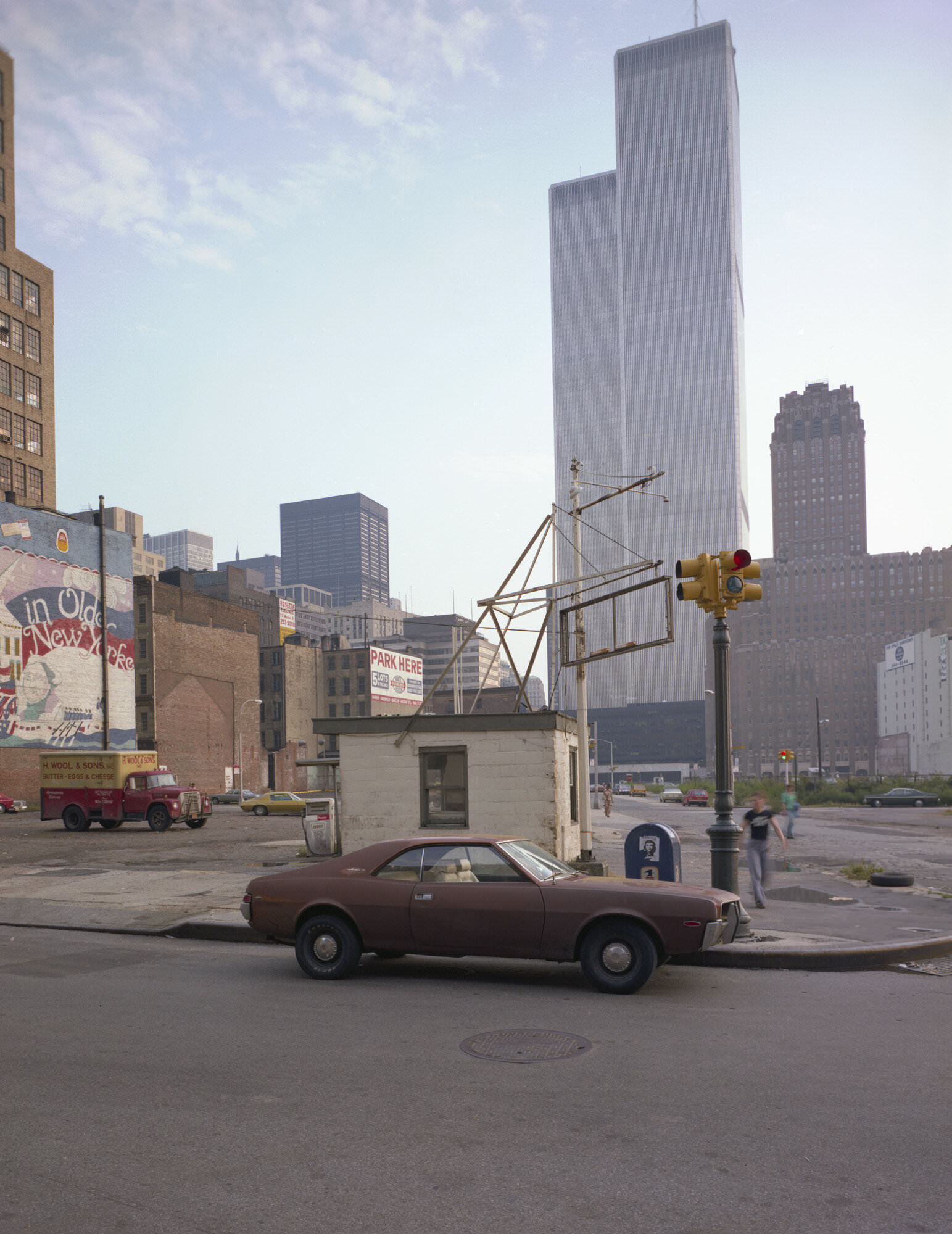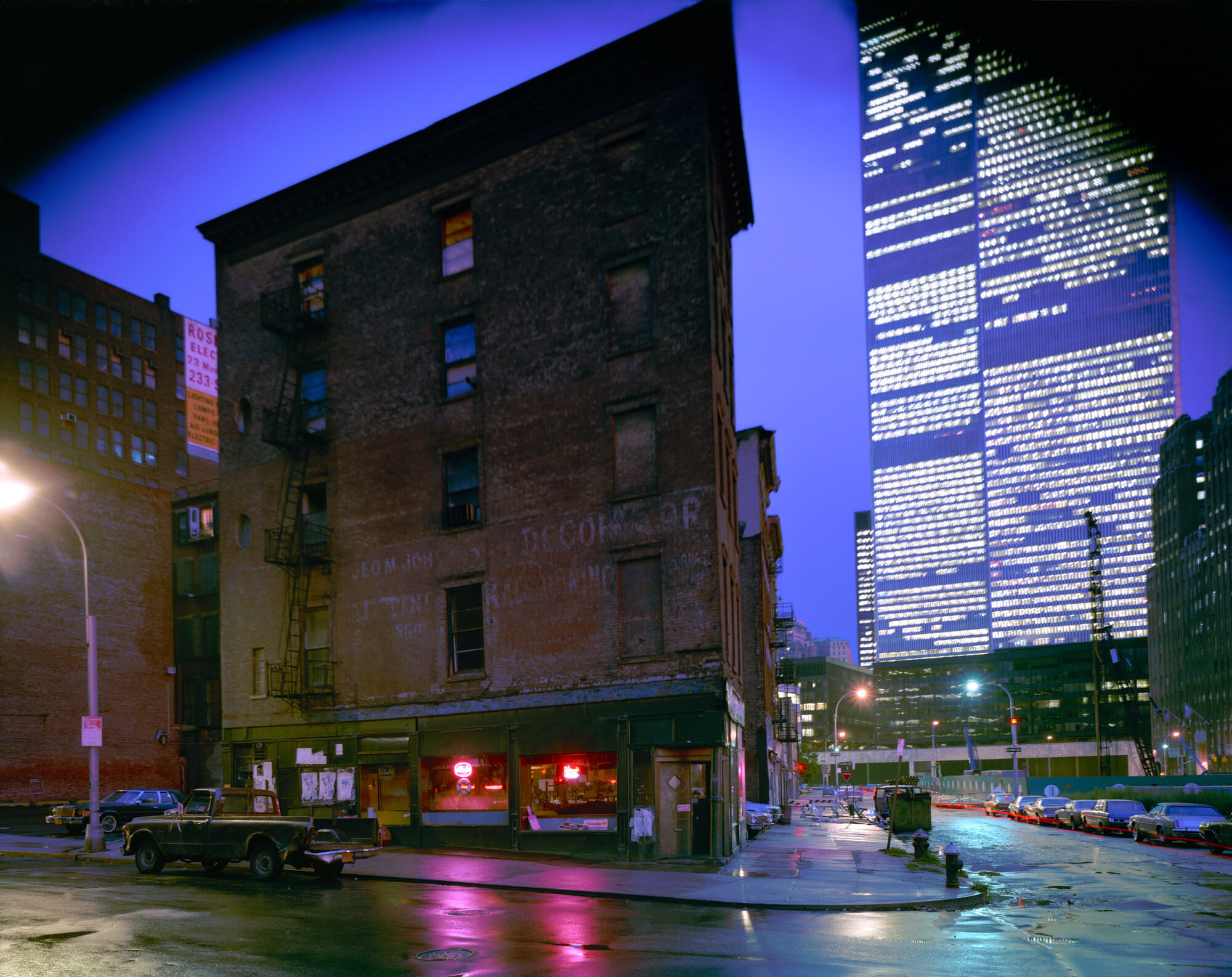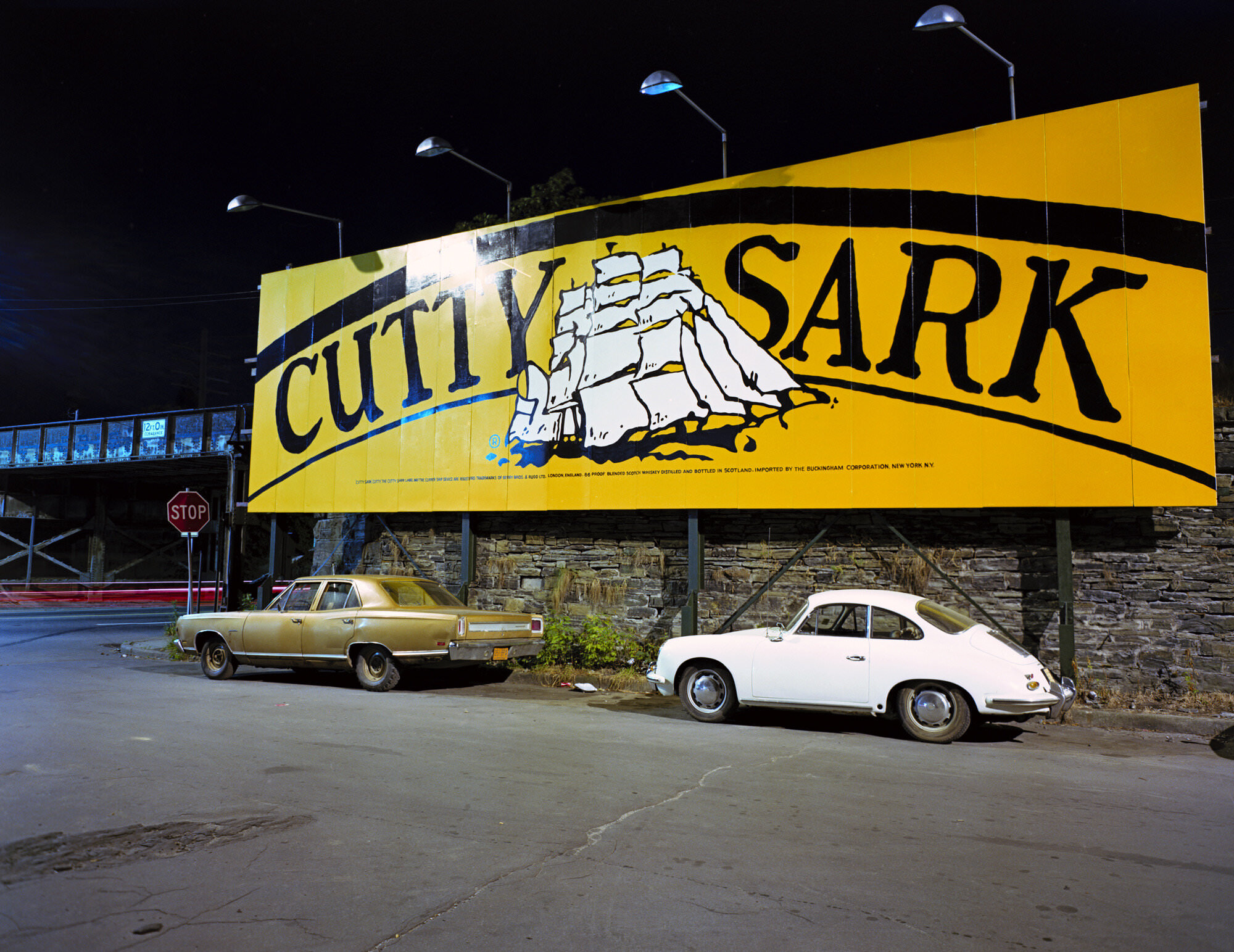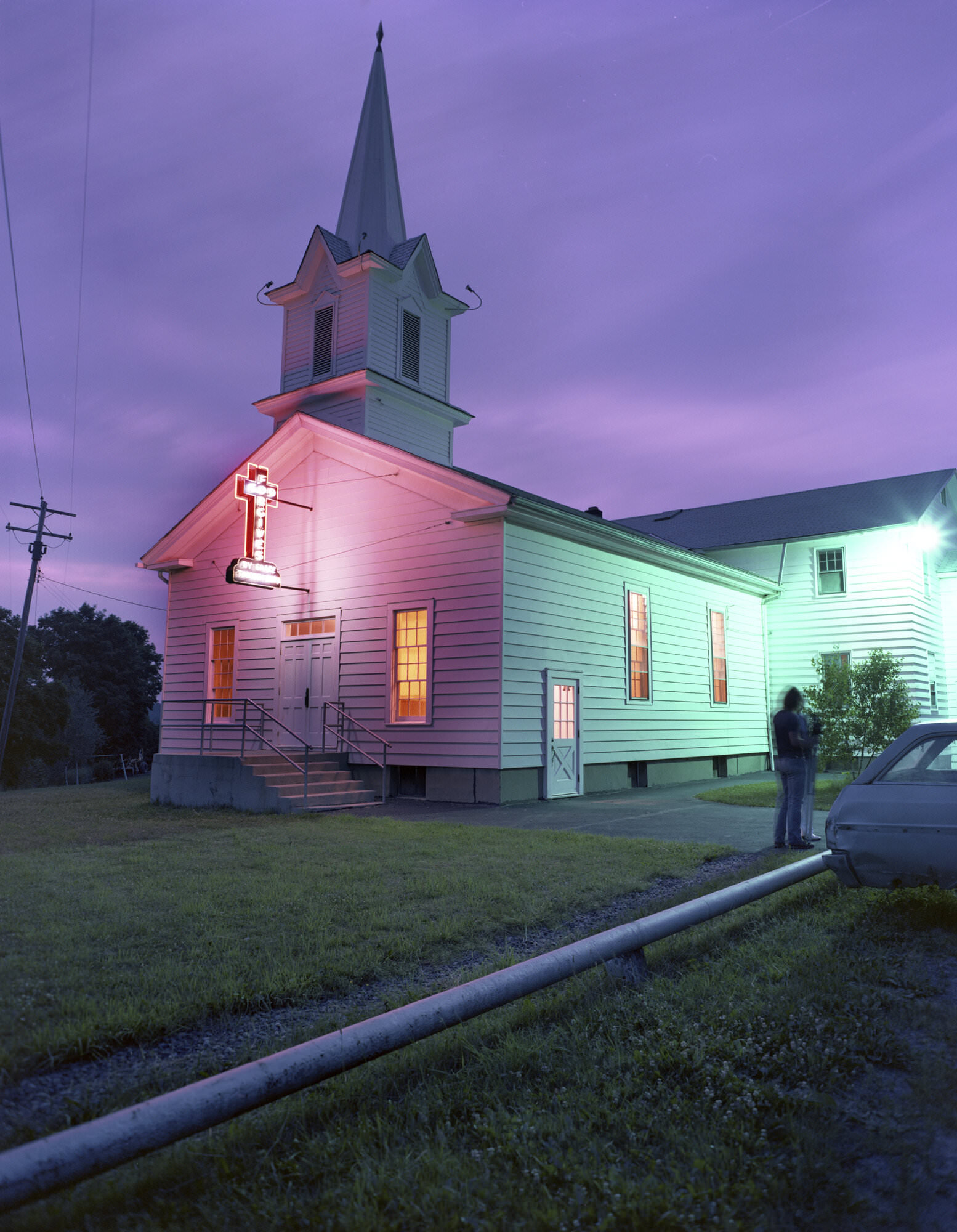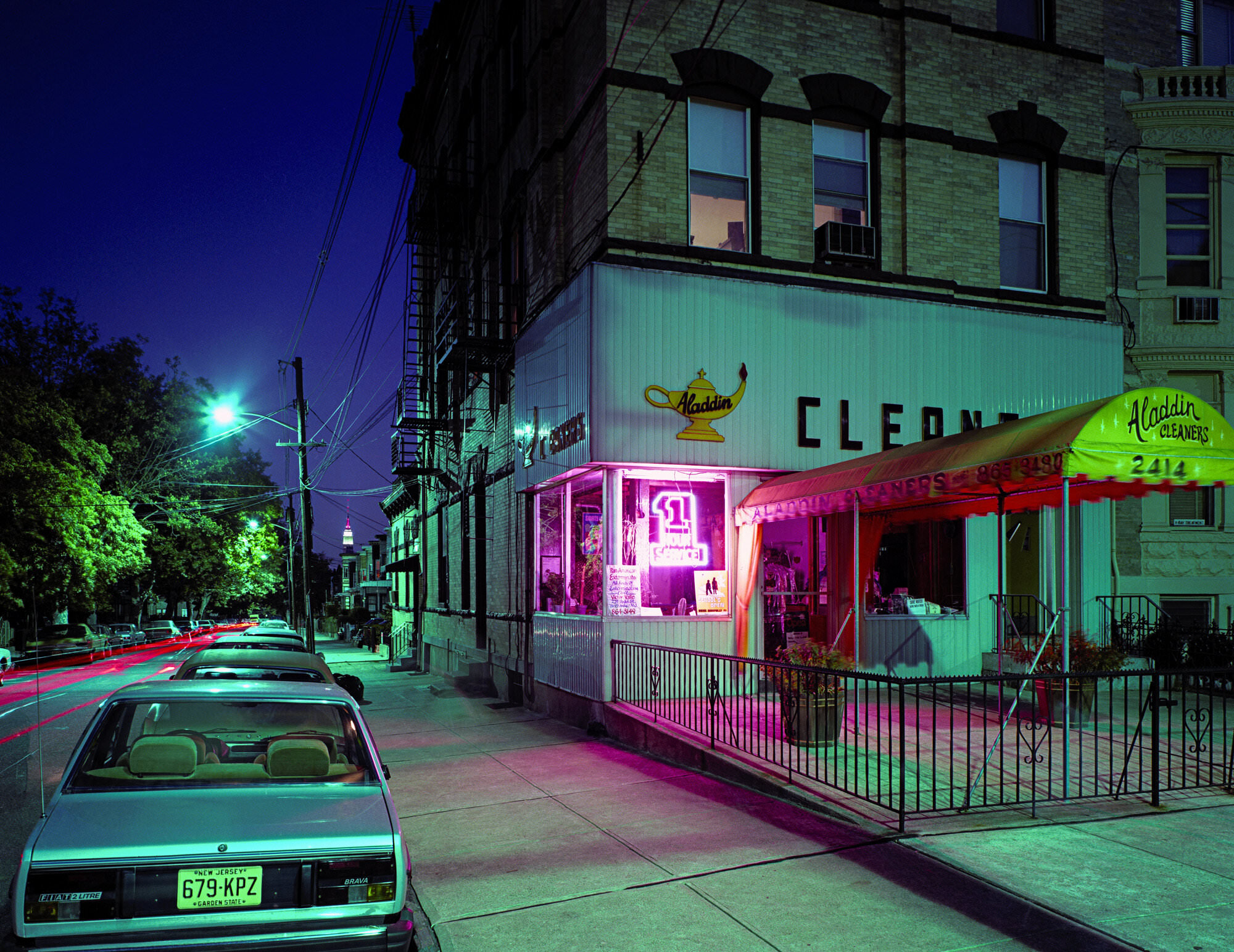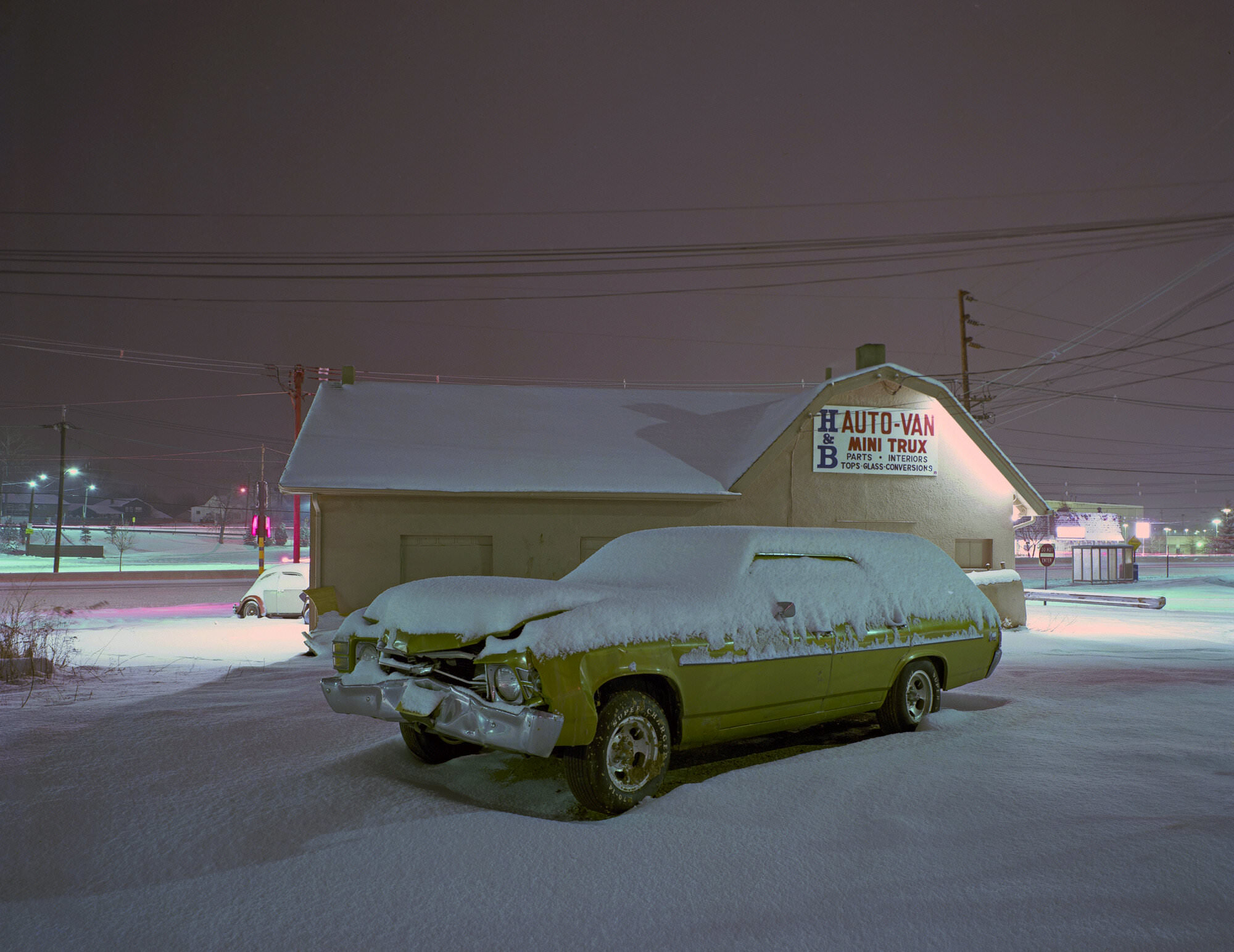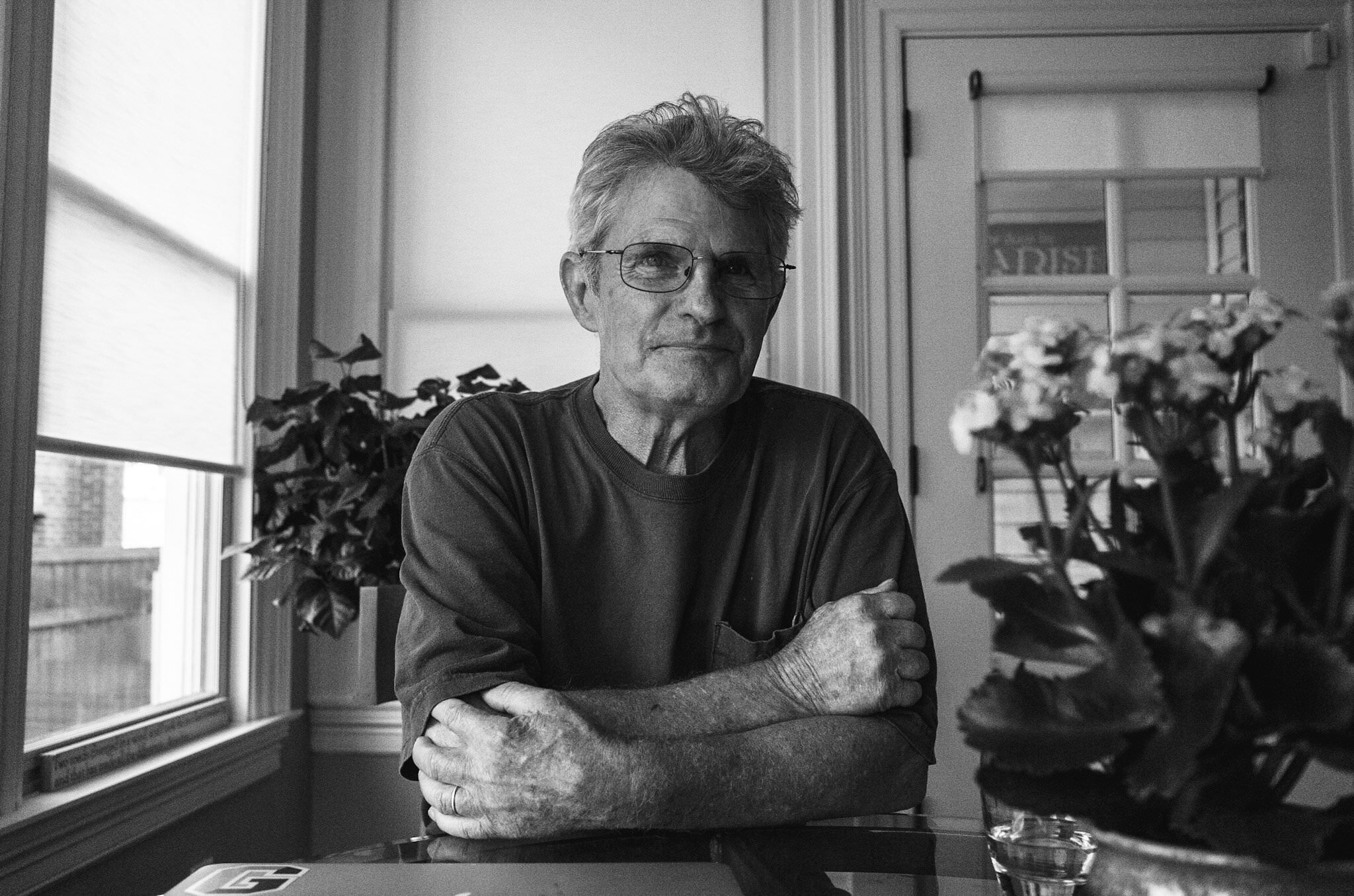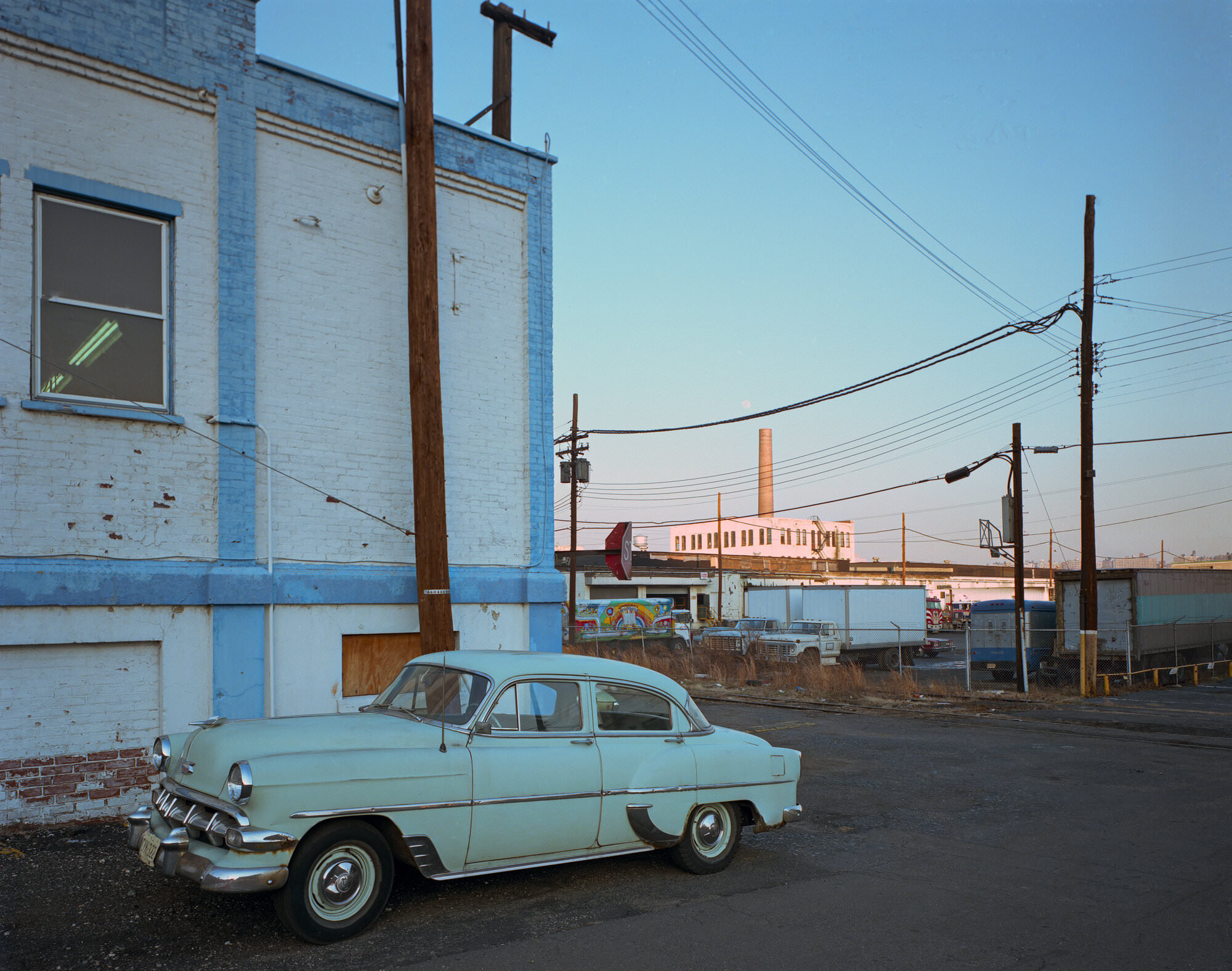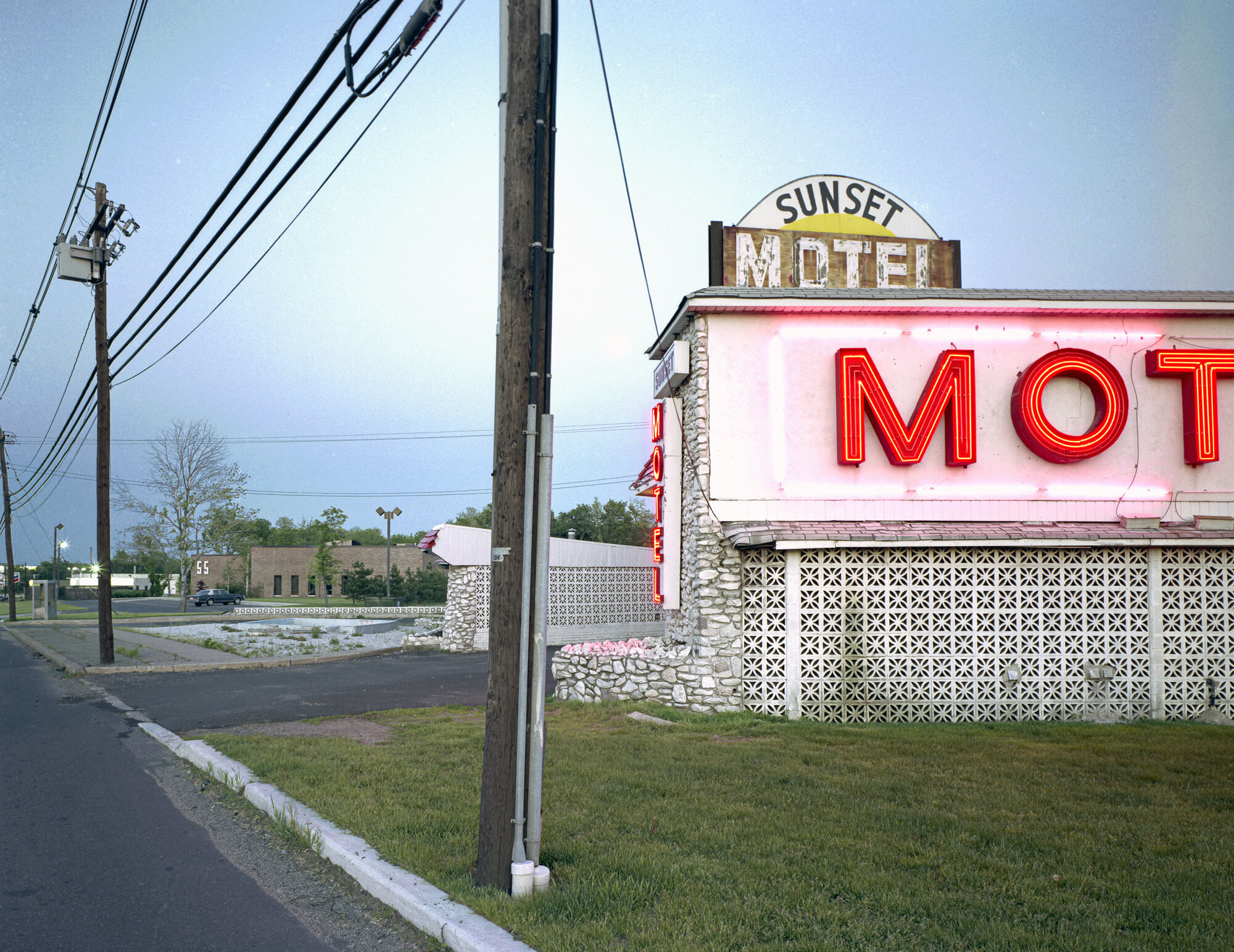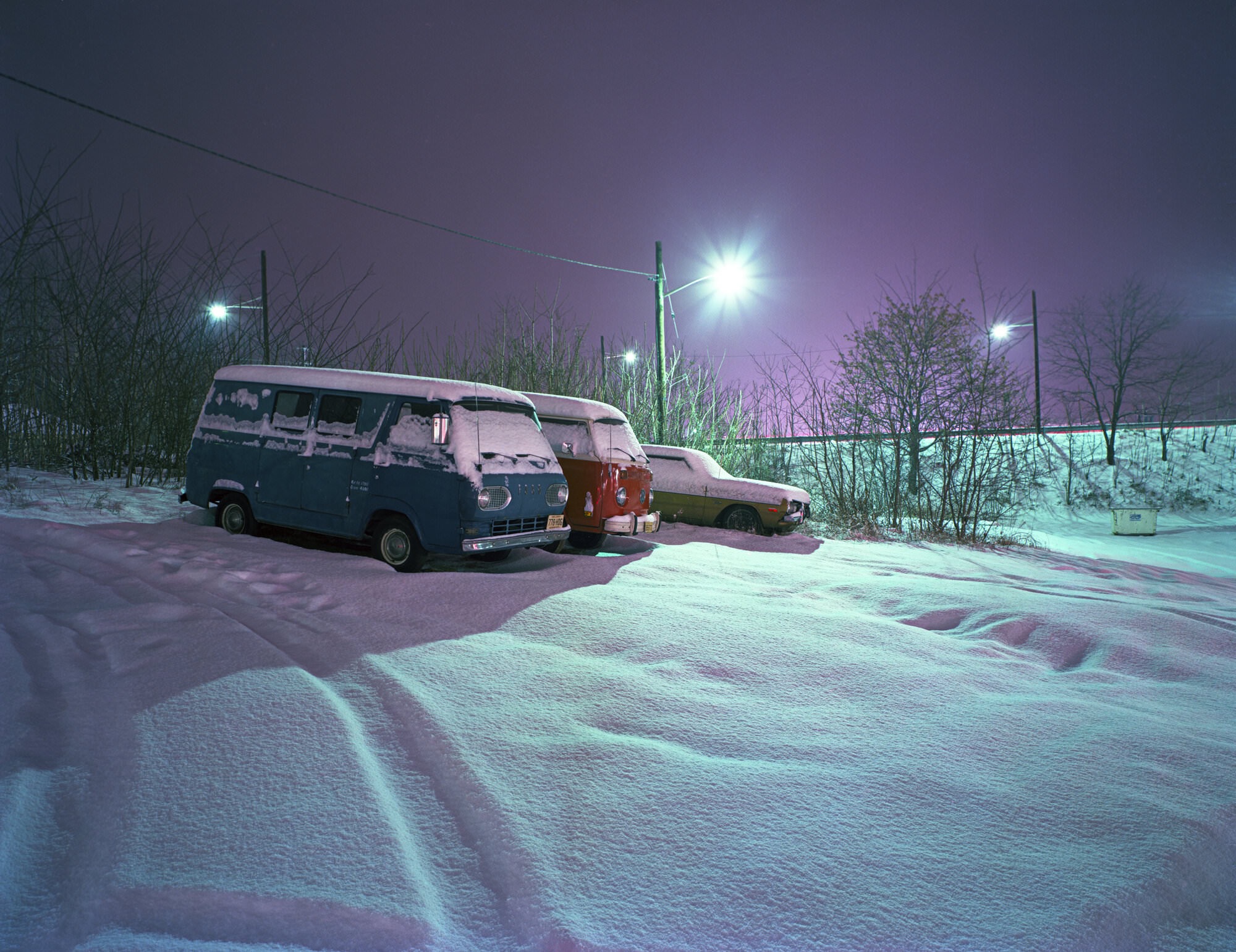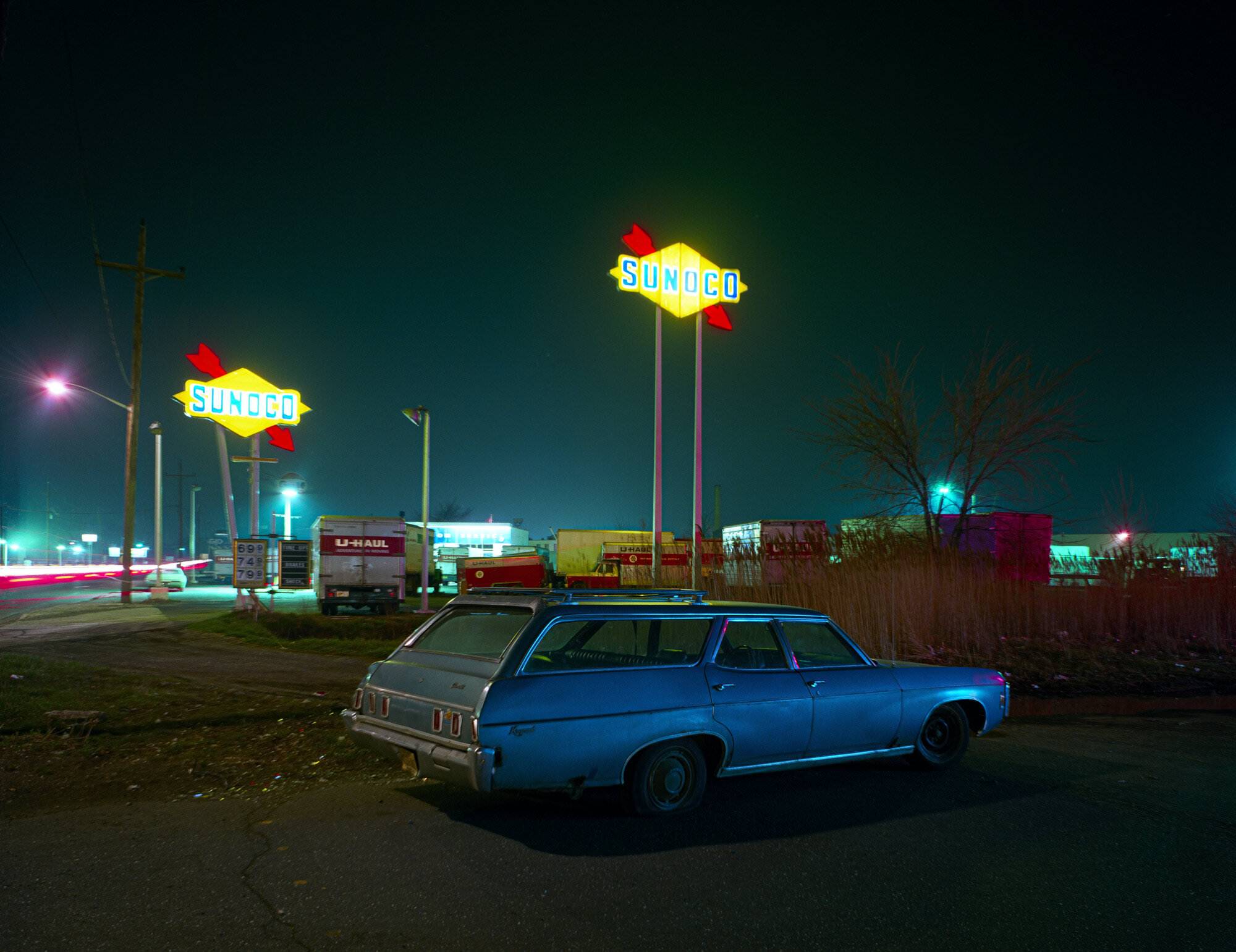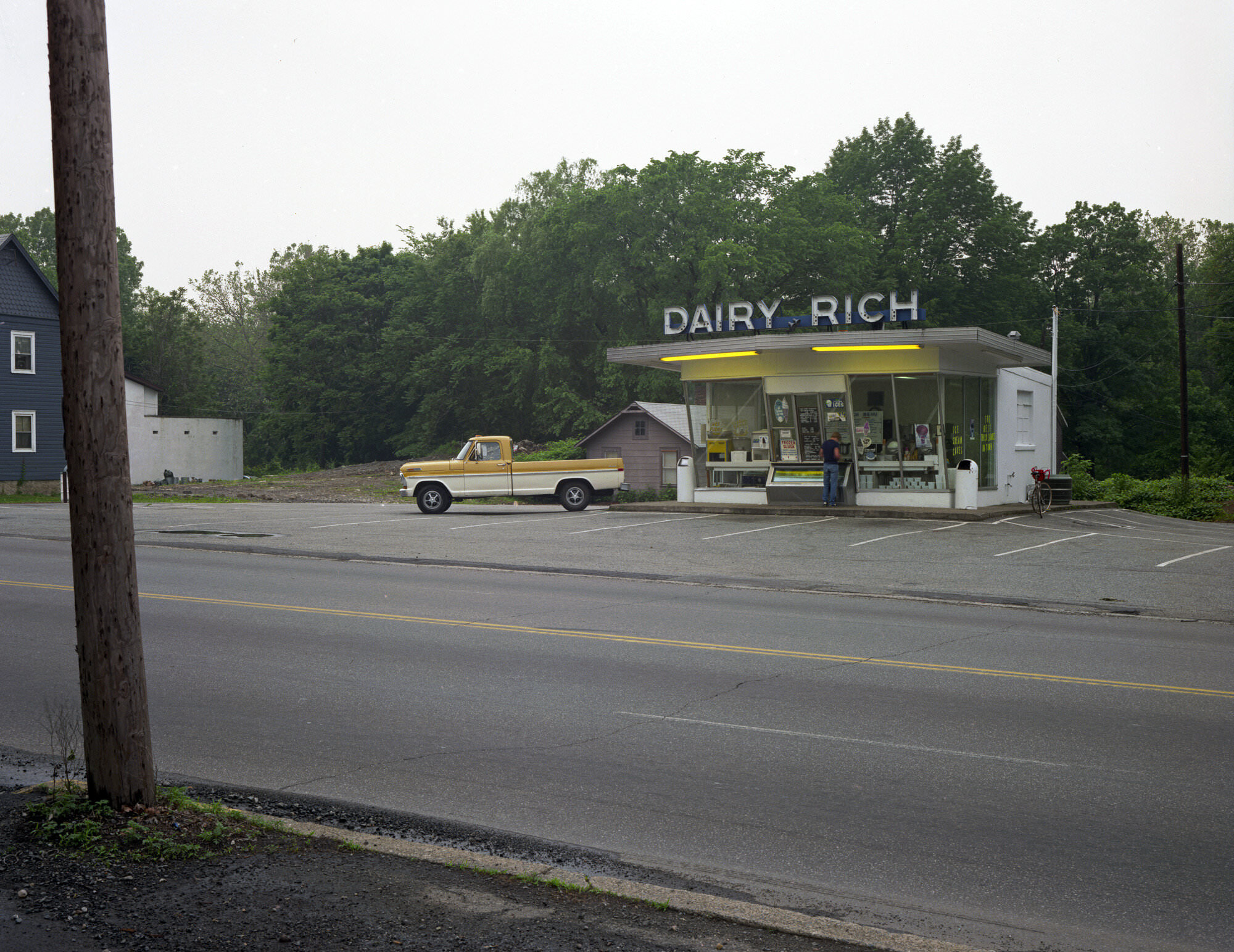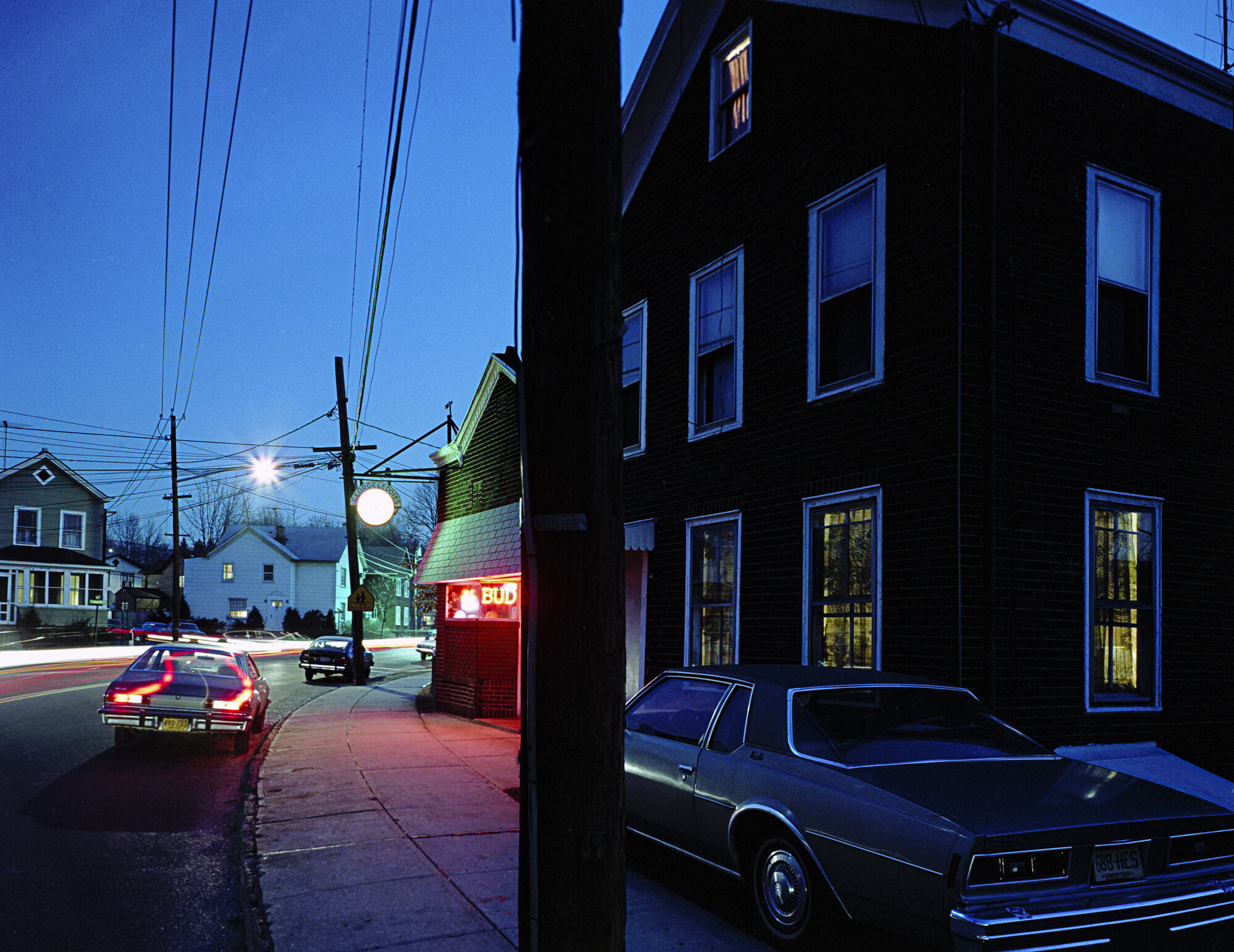Joe Maloney: Life On The Road
RWFA is pleased to announce the addition of Joe Maloney’s exhibition Life on the Road to the RWFA Virtual portal beginning Thursday, September 9.
This selection of Maloney’s photographs from the late 1970s to the early 1980s captures the American romanticization with the road, as both a way of life and a destination, that flourished in the Post-War era. As a result of the influx of massive capital spending on the country’s highway infrastructure following the lean years of World War II, Americans grasped the new industrialization by elevating the automobile to a symbol of social status. The enticing neon lights of establishments line the backdrop of Maloney’s documentation, yet are not inviting enough to stay, as each photograph suggests the promise of the next location, from Yellow Camaro, Paramus, New Jersey to Worland, Wyoming. The body of the car remains the focal point where Maloney pays attention to the car as a form of art itself.
In the waning years of Modernism in the 1970s, the United States suffered the fallout of the political, economic, and cultural upheaval of the 1960s. The result of multiple national tragedies, including wars, assassinations, and social turmoil based on civil rights and economic disparity, all contributing to a strange duality of both the ascension of the American automobile industry as an escape mechanism and the disintegration of inner cities. The car became a vital tool for the liberation of the spirit, providing individuals the ability to take control of their actions and destinations. While the photographs do not date past 1981, the selection immortalizes a lost age of car culture while simultaneously being a timeless visualization of “The American Dream”.
About the Author
Joe Maloney (born in Worcester, Massachusetts, 1949) is a photographer, contractor, and furniture maker. He was a member of the stable of legendary photographers at LIGHT, the preeminent New York gallery of contemporary photography which included many notable photographers whose work in color helped revolutionize the acceptance of the medium.
Maloney, along with Stephen Shore, Mitch Epstein, Carl Toth and others helped set the stage for today’s generation of photographers whose use of color is automatic and not necessarily a conscious choice. At a time when polychromatic images were radical and their validity fought over, Maloney found the subject matter closest to him, suburbia, the receding rural landscape and the cultural oddities that America had created of them bathed in sunlight of enormous emotional range and conflict. Maloney and his peers shared a rampant desire to go beyond the photographers that came before but to bring with them the lessons they learned at a time when it seemed few cared.
Many of his available prints are produced as archival pigment prints, though Maloney is primarily known for his premium vintage dye transfer prints, the now archaic process that Maloney preferred for its legendary color saturation, control, and longevity. Feeling dismayed by the inability of photographic manufacturers to produce affordable materials of lasting quality, Maloney abandoned photography in the 1990s as he watched years of work literally fade away. The ability to salvage his negatives through scanning revived a vital, important, and largely forgotten body of work, making it possible to produce prints of greater brilliance and variety than he could afford to in the past. Mining his archive released images that would otherwise have been consigned to history.
Joe Maloney: Life On The Road
September 9 – October 16, 2021
Rick Wester Fine Art – New York
More info on:

